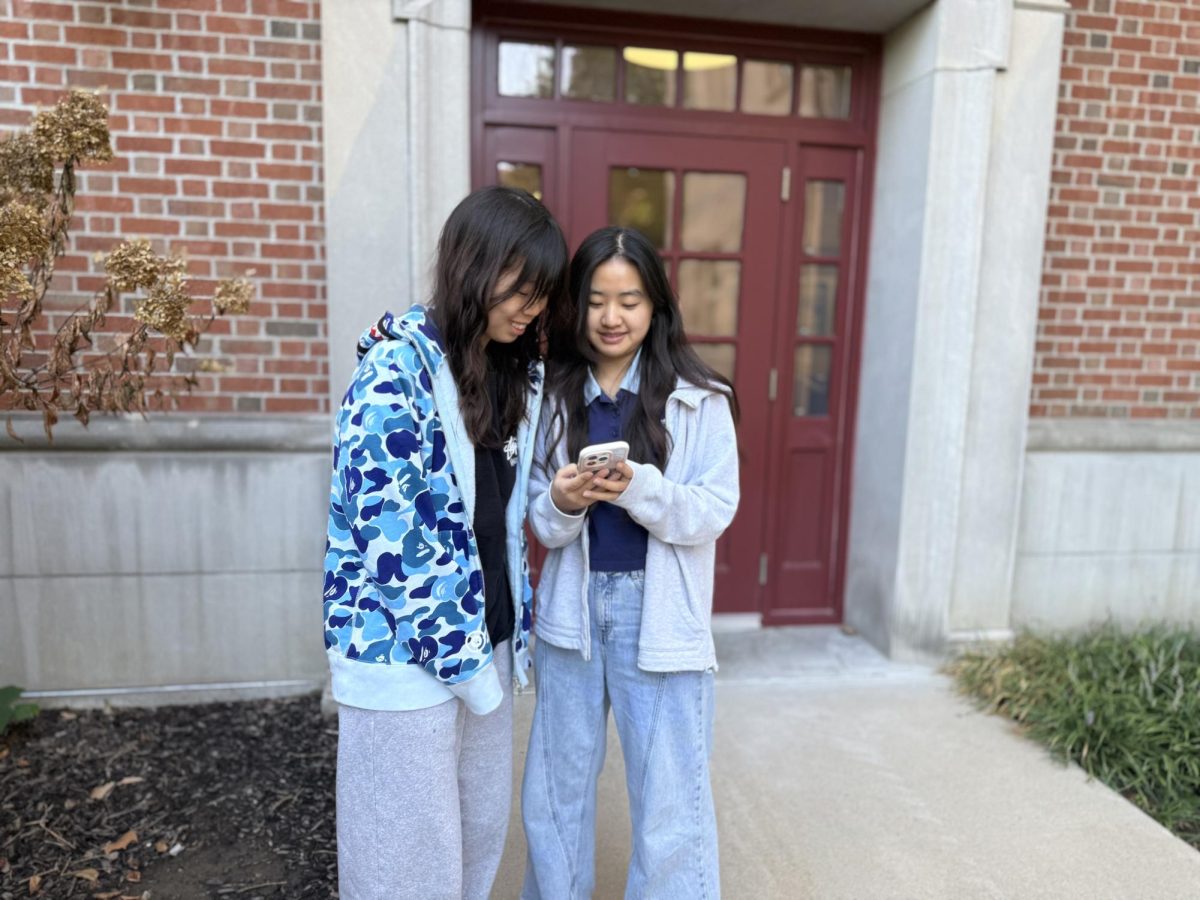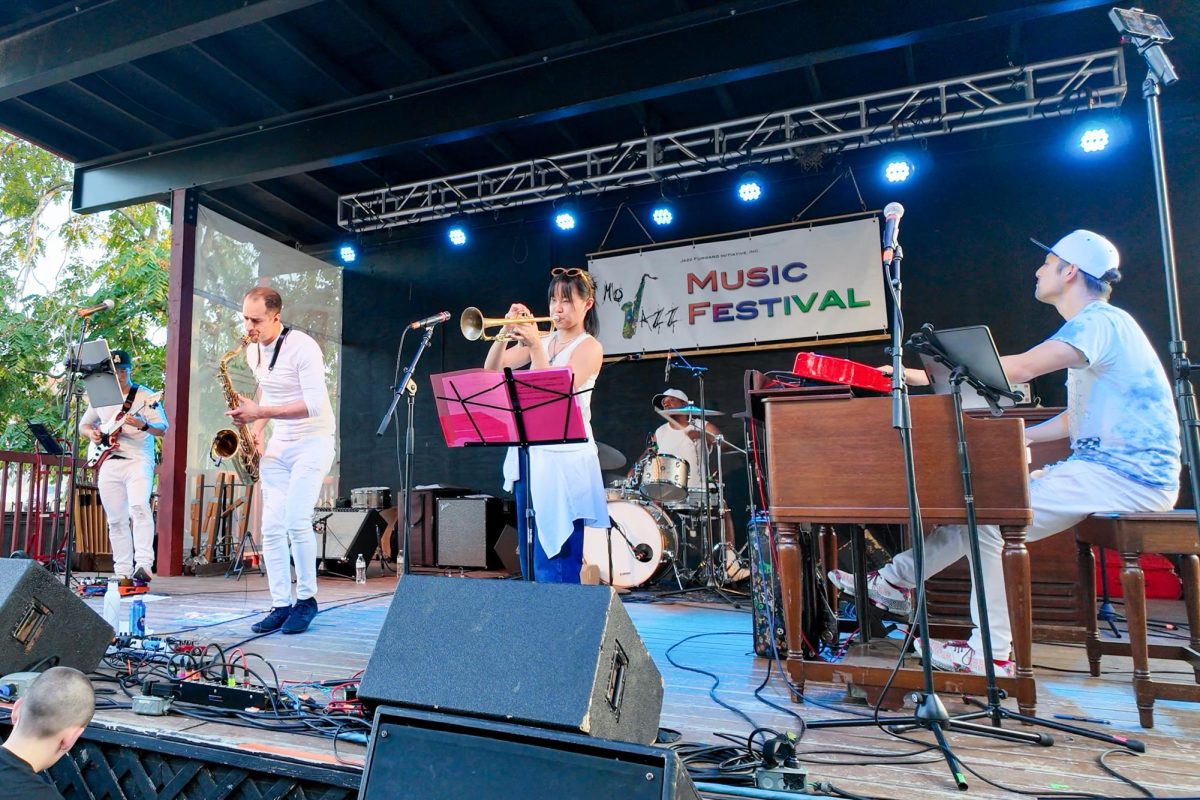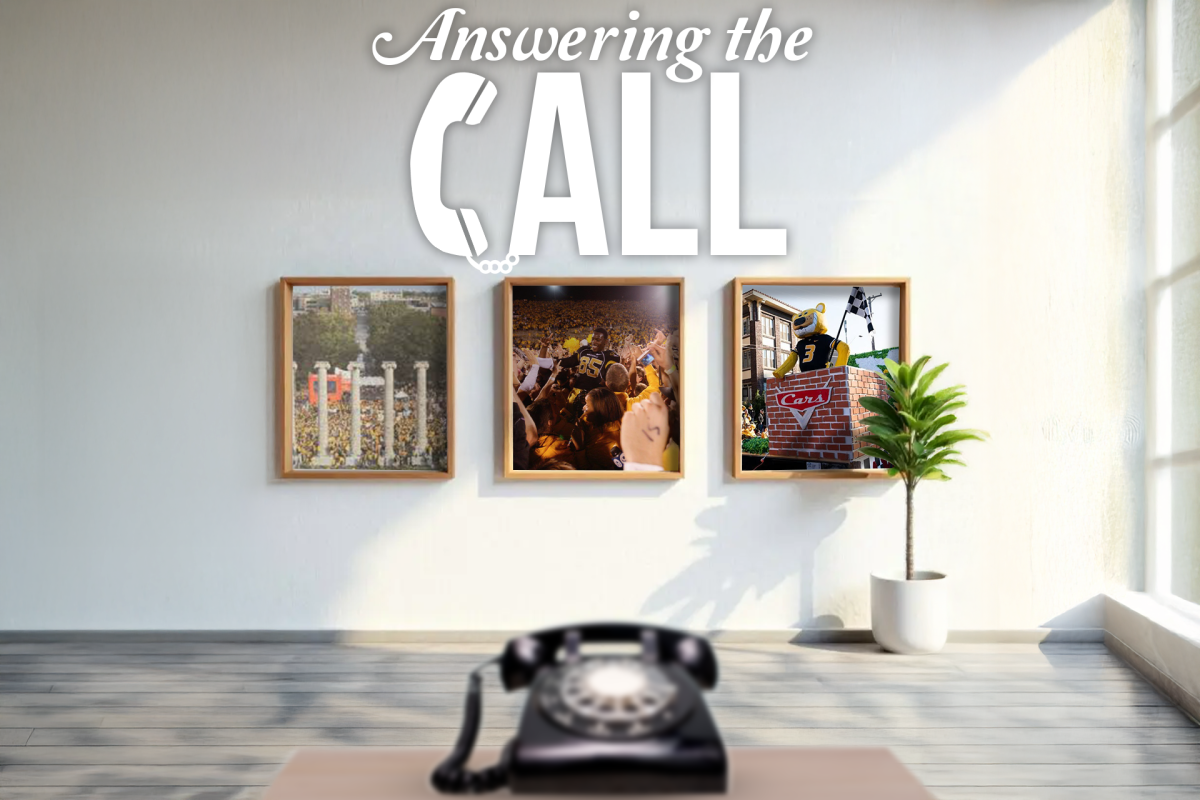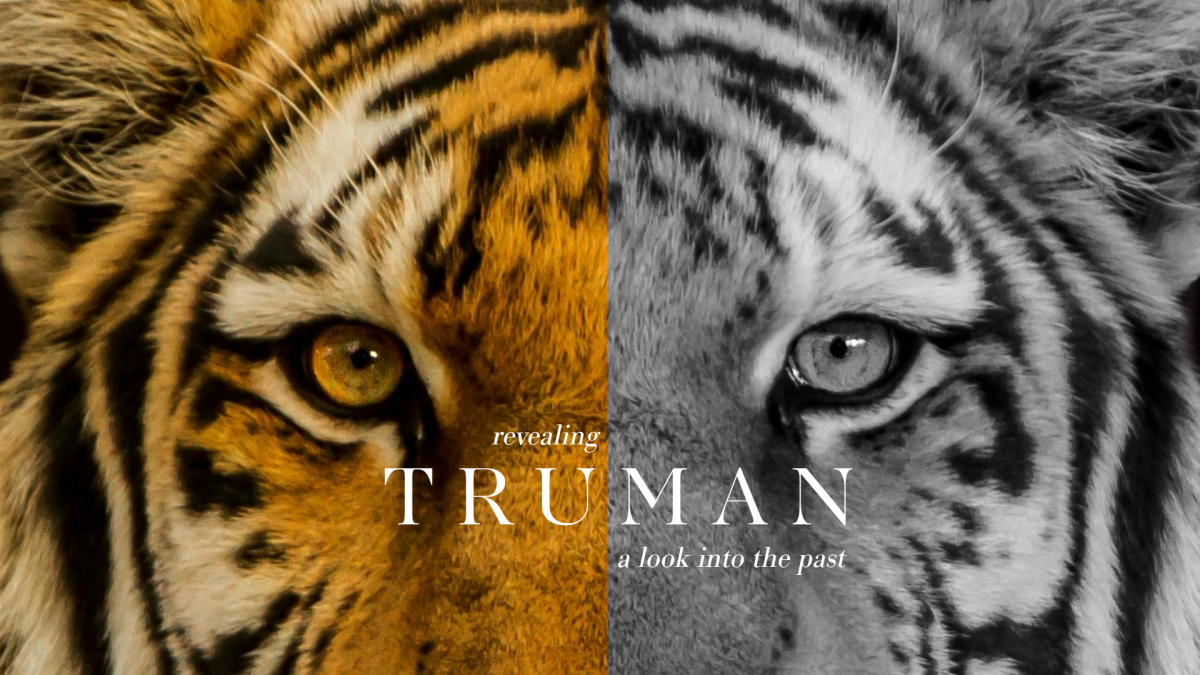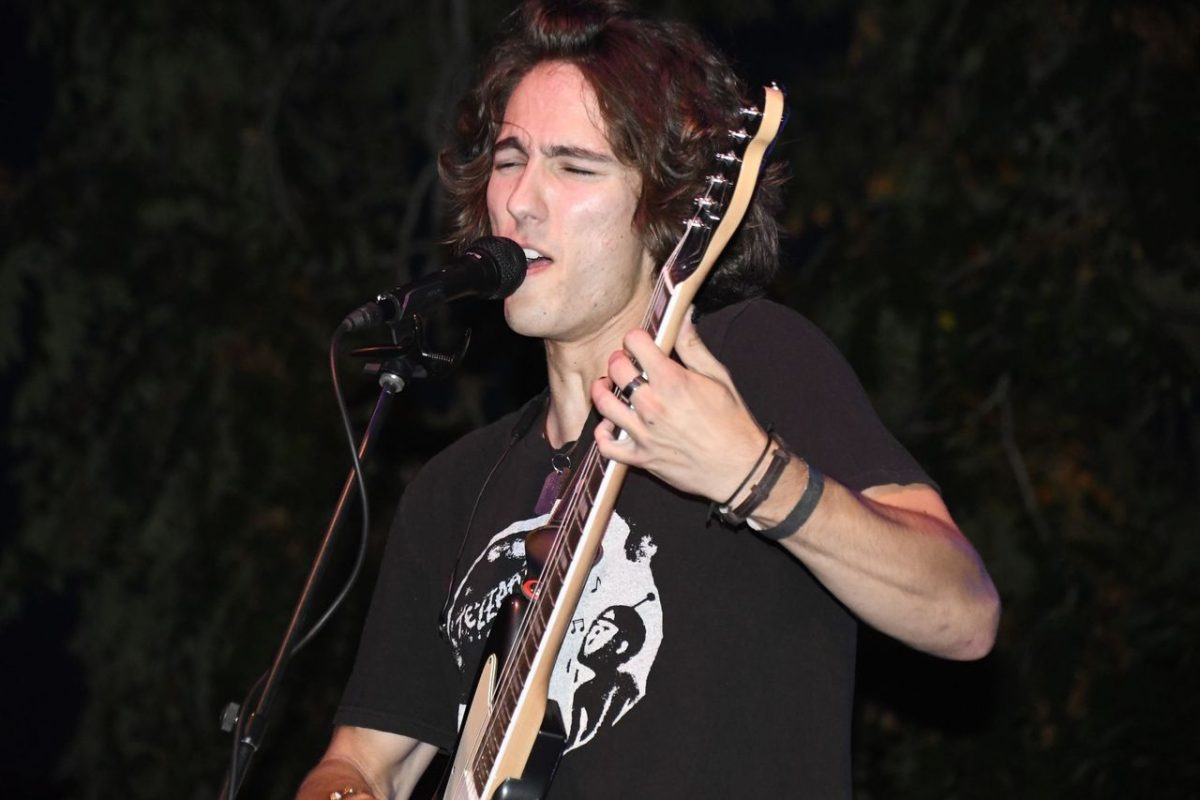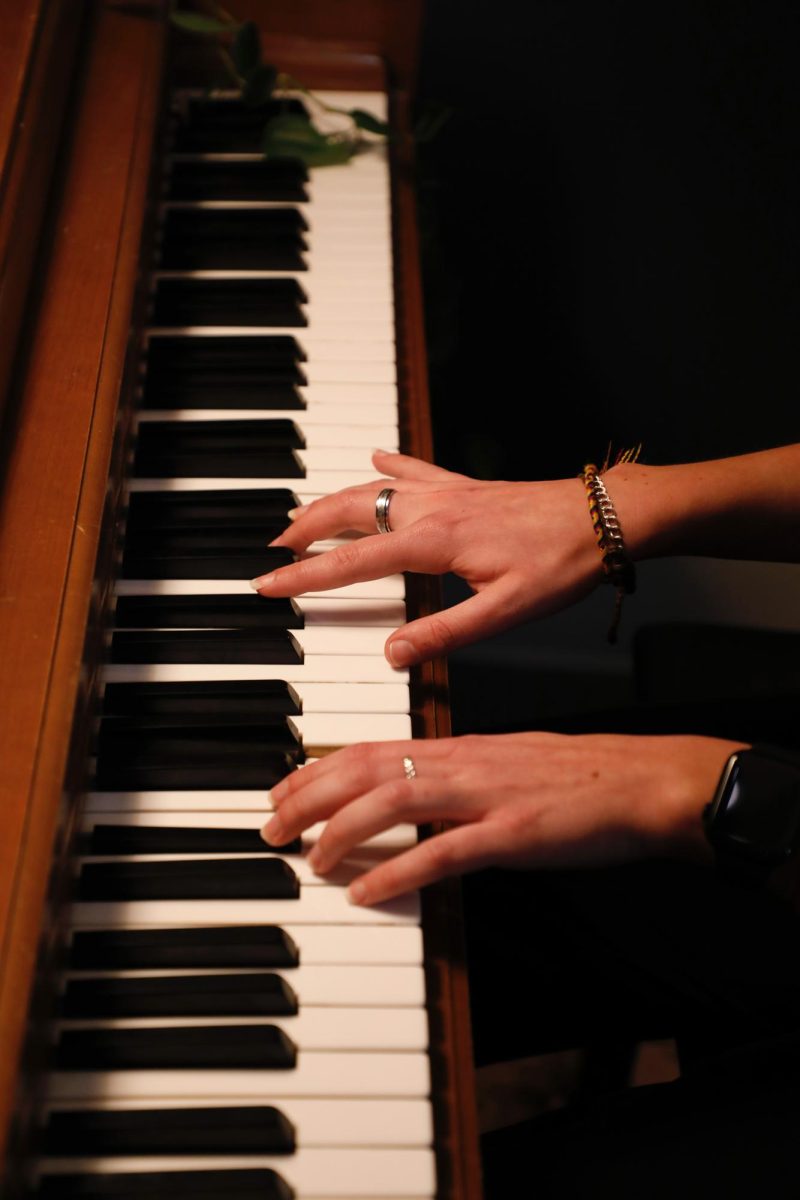Upon first glance, Angela Catalano’s art installment “A System of Hiding Things” featured at True/False Film Fest may appear just like a typical living room.
Located in the Picturehouse at Missouri United Methodist Church, the installation consists of a vintage TV, radio and camera. In the corner, there is a cozy-looking chair next to a bookshelf. The technology in the room is older, but the time and place of the room are nondescript.
While the installation might at first appear mundane, its normality is meant to encourage viewers to look closer. Attached to each technological device is a pair of 3D glasses, inviting individuals to peek inside these devices at hidden surveillance images. The photographs are of a subject who is being surveilled in settings such as a front porch and an elevator.
Catalano layered two surveillance images in each device, forcing viewers to look even closer at the images and to question the reality of what they are seeing.
“A System of Hiding Things” was open to viewers during the entirety of True/False. Catalano changed the surveillance images hidden inside her exhibit every day so that if viewers returned, they weren’t always seeing the same images.
On Friday evening, festivalgoers roamed the Picturehouse while enjoying food, live music and art such as Catalano’s piece. Some people passed by the installation, while others were drawn in by its normality.
Festivalgoer Leandra Toomoth at first thought the installation was a sitting area but then decided to take a closer look.
“Upon closer examination, there was this kind of fixed moment in time,” Toomoth said. “It feels separate from the rest of the room, and that by default kind of got my attention.”
Catalano’s work leaves a considerable amount of interpretation up to the viewer, allowing festivalgoers to have many different thoughts and takeaways from the installation.
Festivalgoer Maria Ramirez noticed that Catalano had layered two surveillance images on top of each other, making her question what the man in the images was actually doing in the photos.
“They all have what I thought is a theme of duality,” Ramirez said. “The duality of the images themselves seems kind of like it’s the same guy. And he might look a little different or he might be doing a different action … but it’s the exact same place and potentially time.”
Toomoth noticed a similar theme of duality because of the installation’s optical illusion.
“I think there has to be something about perspective and about seeing things in different ways. Or maybe how there’s two sides or two vantage points,” Toomoth said. “There are different ways to see things.”
While Catalano wants to allow the viewers of her installation to reflect on their own interpretation, she created her piece with a specific interest in mind.
“I would like [the installation] to reflect upon the ways in which surveillance can be sort of hidden in our everyday conveniences, the things that can surveil us in our own life,” Catalano said. “By putting it in a living room setting, I was hoping that that will make people feel uncomfortable in the ways in which our technologies have evolved in a way that can be, for lack of a better phrase, used against us, or used to gather information on us.”
Catalano became interested in surveillance after the September 11 attacks in 2001. The signing of the Patriot Act by former President George W. Bush made Catalano want to learn more about how the government can surveil citizens and how increased surveillance changes the way people live.
“A System of Hiding Things” is a product of Catalano’s interest in surveillance as well as film, making it fitting for True/False.
“I think just the overarching philosophy of True/False is this notion of thinking about what is nonfiction work, what is fiction work, where do those things overlap, or do they collide?” Catalano said. “And so I thought maybe my piece would fit in well with this because it’s sort of asking you to question whether what you’re seeing is real or not.”
Catalano wants viewers to simply interact with the installation, allowing them to come to their own conclusion about her work.
“It’s such a fine line,” Catalano said. “You don’t want to tell people, ‘Here’s how you should experience my work.’”
Festivalgoers actively participated in the installation, from sitting in the chair and observing the items around them to gazing through the 3D glasses at the hidden images. Catalano’s work allowed festivalgoers to actively be a part of the installation while also inviting them to draw their own unique conclusions about its meaning.
“A System of Hiding Things” reminded viewers like Toomoth of the many ways art can be displayed and interpreted.
“Anything could be art,” Toomoth said. “I think it’s really about how you view the world.”
_Edited by Sophie Stephens | [email protected]_



